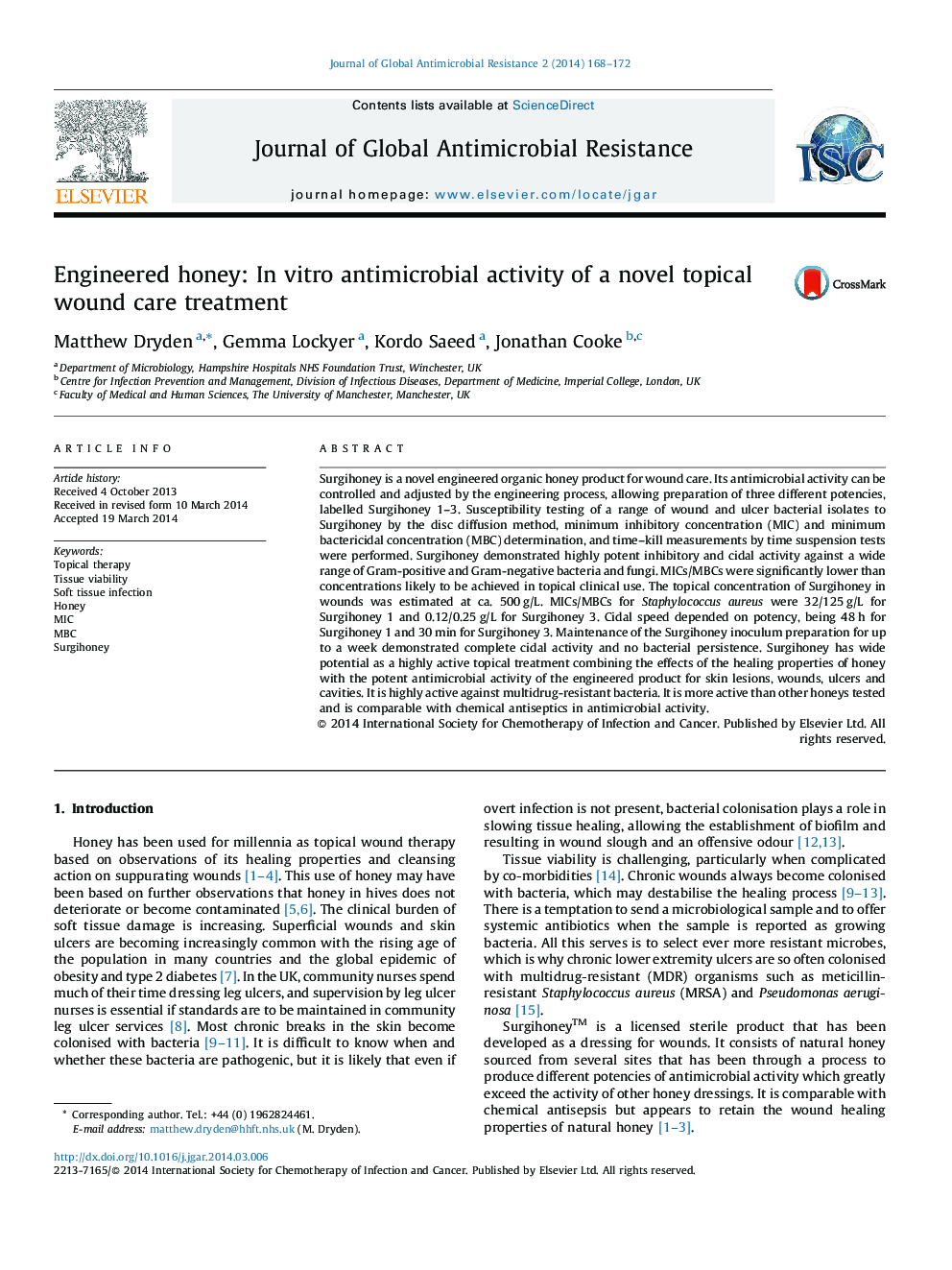| کد مقاله | کد نشریه | سال انتشار | مقاله انگلیسی | نسخه تمام متن |
|---|---|---|---|---|
| 3405724 | 1223477 | 2014 | 5 صفحه PDF | دانلود رایگان |
Surgihoney is a novel engineered organic honey product for wound care. Its antimicrobial activity can be controlled and adjusted by the engineering process, allowing preparation of three different potencies, labelled Surgihoney 1–3. Susceptibility testing of a range of wound and ulcer bacterial isolates to Surgihoney by the disc diffusion method, minimum inhibitory concentration (MIC) and minimum bactericidal concentration (MBC) determination, and time–kill measurements by time suspension tests were performed. Surgihoney demonstrated highly potent inhibitory and cidal activity against a wide range of Gram-positive and Gram-negative bacteria and fungi. MICs/MBCs were significantly lower than concentrations likely to be achieved in topical clinical use. The topical concentration of Surgihoney in wounds was estimated at ca. 500 g/L. MICs/MBCs for Staphylococcus aureus were 32/125 g/L for Surgihoney 1 and 0.12/0.25 g/L for Surgihoney 3. Cidal speed depended on potency, being 48 h for Surgihoney 1 and 30 min for Surgihoney 3. Maintenance of the Surgihoney inoculum preparation for up to a week demonstrated complete cidal activity and no bacterial persistence. Surgihoney has wide potential as a highly active topical treatment combining the effects of the healing properties of honey with the potent antimicrobial activity of the engineered product for skin lesions, wounds, ulcers and cavities. It is highly active against multidrug-resistant bacteria. It is more active than other honeys tested and is comparable with chemical antiseptics in antimicrobial activity.
Journal: Journal of Global Antimicrobial Resistance - Volume 2, Issue 3, September 2014, Pages 168–172
